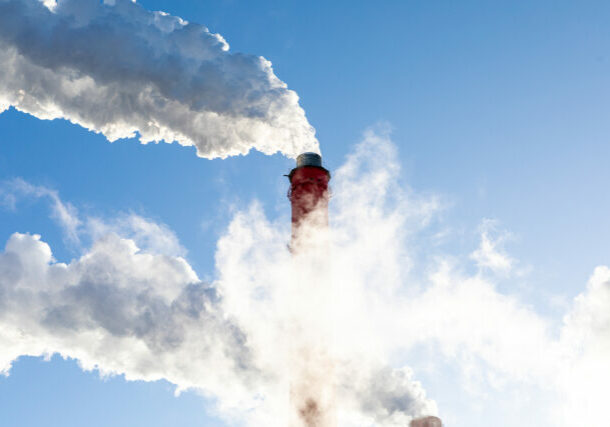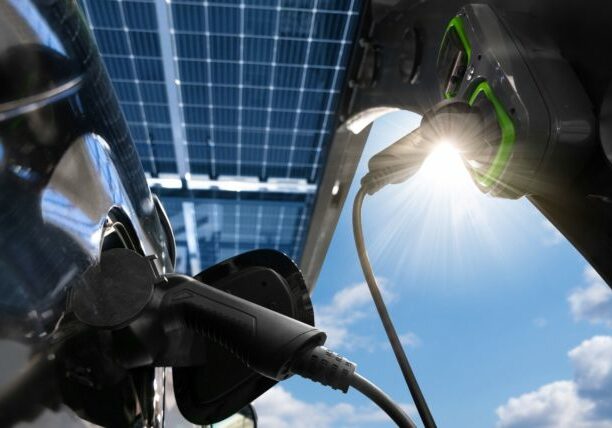November 6, 2015
A Grid Submerged: The Case for More Resilient Power
By Sarah Galbraith
Power plants, substations, and transmission lines in coastal communities, where approximately one-third of the country’s population resides, are at risk today from flooding caused by major storms. On the East Coast, for example, home to 70 million residents, extensive power outages have been caused by major hurricanes like Katrina, Rita, Wilma, Sandy, and Irene, to name just a few. These storms each took hundreds of substations off-line and left millions without power, often for several days or even weeks.
The problem is quickly getting worse, as global warming melts glaciers and ice floes, resulting in sea level rise, higher tides and increased storm surge. This is the take-away message of a new report titled “Lights Out? Storm Surge, Blackouts, and How Clean Energy Can Help” from the Union of Concerned Scientists (UCS) with contributions from Clean Energy Group. The findings indicate “a societally unacceptable risk of major, widespread electric outages from storm surge along the East and Gulf Coasts.”
The team of researchers at UCS, including Steven Clemmer and Julie McNamara, identified five major metropolitan areas that tend to be in the path of big storms: the Delaware Valley, Southeastern Virginia, the South Carolina Lowcountry, Southeastern Florida, and the Central Gulf Coast. They modeled the impact of larger storm surges caused by sea level rise predicted to occur over the next 55 years under several hurricane strength scenarios for each of these areas, and identified the number of power plants and substations that would be impacted.
The results of this USC analysis show an electricity grid that is greatly at risk in the years to come. The Delaware Valley region, for example, could experience significant flooding from a Category 3 hurricane in 2050, given the additional sea level rise that is predicted to occur by then. This scenario puts substations and power plants even tens of miles up the Delaware River in the path of 10 to 15 feet of water, affecting electricity supply for the region’s 2.8 million people.
In the Central Gulf Coast region, there are 119 substations facing significant flooding risk today, but as sea level rises and pushes storm surges higher, a Category 3 hurricane in 2050 would put 141 substations and 12 power plants at risk from floods of 10 to 15 feet in depth or more in an area with more than 1.5 million people.
To get a sense for the impact of just one power plant going offline, the blackout of 2003 is a great example to look to. In this instance, a power plant went offline during a period of high electrical demand, which had a ripple effect down the transmission system and ultimately forced the shutdown of more than 100 power plants, leaving 55 million people in the Eastern US and Canada in the dark. Unlike other types of outages, power plants and substations that have been flooded with seawater are not quick or easy to fix. Repairs involve disassembling, drying, and reassembling electrical equipment which takes a long time and is expensive for utilities, and ultimately for customers. Replacing the facilities can take years and cost millions of dollars.
“Superstorm Sandy was a wakeup call to the Northeast when it made landfall,” said Clemmer in a recent Clean Energy Group webinar on the UCS report. (Watch the full webinar here.) Aside from loss of life and property, he pointed out that the storm caused billions of dollars in damages and left more than 8 million people in 21 states without power. Outages of this scale put at risk critical services like emergency response, life support and refrigerated medicines, wastewater treatment, communications, and access to food.
Clemmer said in the webinar that steps have been taken to build more resilient power systems that can withstand coastal flooding caused by powerful storms on the East and Gulf Coasts, but added, “Some progress has been made, but the investments are not yet up to the scale of the problem.”
So how can we keep the lights on? The answers fall into two main categories, according to Clemmer: adapting the grid for a future with higher sea level and increased storm surges, and mitigation that improves the resiliency of the grid and reduces global warming.
Adaption strategies include protecting these facilities by building seawalls, artificial barriers, or natural wetland buffers; modifying the facilities and their equipment by elevating them, using submersible equipment, or installing smart-grid technologies that re-route electricity around failed stations; and relocating or retiring these at-risk facilities, and limiting the construction of new electricity facilities in high-risk areas.
As for mitigation, the authors make a strong case for resilient power, writing that “a resilient approach that places efficient and clean energy technologies at the core of its solutions helps our communities prepare for a climate-impacted future while also reducing the emissions that are driving those effects.”
The UCS report states that distributed renewable resources, like solar and wind power generation, will allow for increased grid flexibility and decreased vulnerability to widespread outages. And technologies capable of islanding from the grid, such as energy storage, combined heat and power systems, and microgrids, will support greater resiliency. Together, these technologies can continue to power critical facilities when the larger grid goes down.














